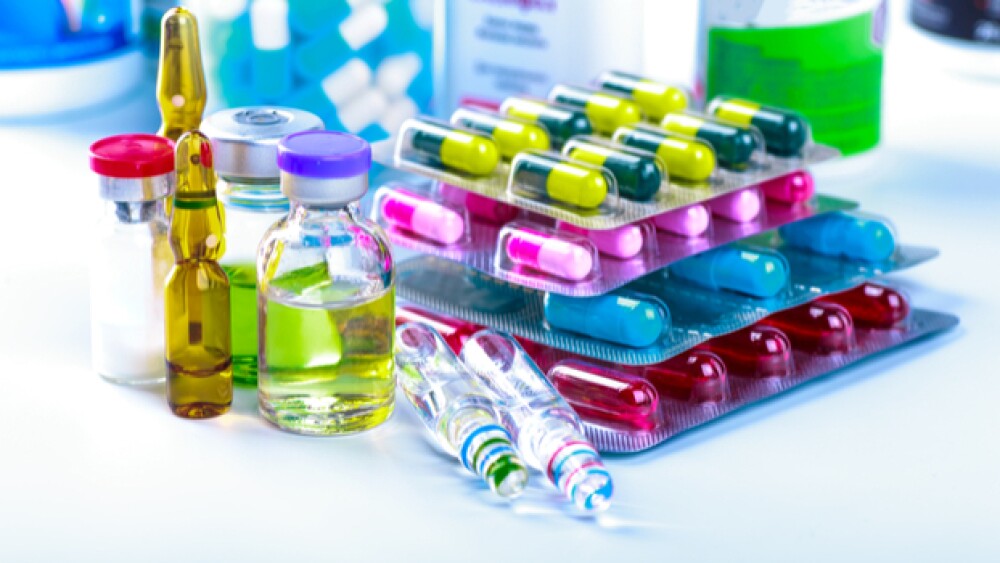Biopharma has several unique challenges, but one of them is the patent cliff. In an industry where only about one in 10 compounds actually makes it to market on average, those drugs aren’t able to stay on the market very long before their patents end and generic competition begins.
Biopharma has several unique challenges, but one of them is the patent cliff. In an industry where only about one in 10 compounds actually makes it to market on average, those drugs aren’t able to stay on the market very long before their patents end and generic competition begins. Although this is a generally positive thing for consumers, it’s a major issue for big pharma companies.
A recent report by Accenture outlines three signs of compressive disruption. The first sign, or red flag, is that the future value of the industry shrank for three consecutive years, 42% in 2015, 31% in both 2016 and 2017, and 28% in 2018. The second sign was a gradual decline in the amount of time a treatment holds its leading position in the market. In 2000, the average tenure for a market-leading treatment was 10.5 years, but in 2017 it was 5.1 years, a drop of 51%. And the third sign is one everyone in the industry is aware of, the difficulty in compensating for revenue lost because of expiring patents.
These data have been partially reinforced by recent quarterly reports of three big pharma companies, according to Bloomberg. “First-quarter earnings reports on Tuesday from three drug giants showed that sales growth for some of the biggest-selling medicines of recent years is beginning to mature and slow—and that companies are on the hunt for new therapies to keep their growth engines roaring.”
To be fair, the drugs are still doing very well and increasing sales overall, but not necessarily meeting Wall Street projections.
Merck & Company’s Keytruda, for example, raked in $2.27 billion in the first quarter. Its first-quarter financial report that showed quarterly sales of $10.8 billion, an increase of 8%. Those sales were largely driven by its checkpoint inhibitor Keytruda, which grew 55% for the quarter to $2.269 billion from the same period last year, when it brought in $1.464 billion. Pharmaceutical sales in general increased 8% from $8.919 billion in the first quarter of 2018 to $9.663 billion this quarter. However, the company filed with the U.S. Securities and Exchange Commission that it plans an extensive restructuring of its manufacturing and supply network. This will, it indicates, reduce its “global real estate footprint.”
The company is working to develop more cutting-edge biologics like Keytruda to replace older, more traditional medications, and to fill in the inevitable decline of Keytruda sales, particularly since the main global patents for the drug will expire in May 2026. And the company’s Januvia patent expires in 2022.
Pfizer’s cancer drug Ibrance came on the market in 2015 and sold $1.13 billion in sales that year, but the sales are starting to slow. It’s hard to see exactly how Bloomberg sees that, given that the company reported Ibrance sales were up globally 25%, driven by 107% operational growth in international markets, but only 2% in the U.S., “reflecting continued moderating volumes in approved metastatic breast cancer indications.”
However, Pfizer’s stock has dropped about 6.2% from last year while the Dow gained 14%. Sam Fazeli, an analyst with Bloomberg Intelligence, wrote in a note to clients, “With increasing dependence on Ibrance, M&A is becoming more likely.”
Bloomberg does point out that Eli Lilly and Company “has begun to refashion itself as a cancer-focused maker of innovative new drugs. Earlier this year, it acquired Loxo Oncology for $8 billion in a bet on a new class of cancer therapies, and spun off its Elanco animal-health business.”
For its first-quarter earnings report, Eli Lilly reported $5.0922 billion in revenue, an overall increase of 3% from the same period in 2018. Although sales of its diabetes drug Trulicity were still good, bringing in $879.7 million, up 30% from $678.3 million in the first quarter of 2018, it was below expectations, largely based on lower prices and changes in estimates to rebates and discounts. Analysts’ projections were for $952 million.
The company revised its 2019 revenue projections to $22.0 billion to $22.5 billion, lower than an earlier projection of $25.1 billion to $25.6 billion. Analysts had projected $22.17 billion.
Ashtyn Evans, an analyst with Edward Jones & Co., wrote in a note to investors, “We view Lilly’s new drug portfolio as one of the strongest in the industry, and we believe it will make up roughly 60% of company sales by 2022, driven by cancer and diabetes.”
Bristol-Myers Squibb Company, for its part, dug deep on M&A to acquire new drugs, investing about $74 billion to acquire Celgene, which markets cancer drugs Revlimid and Pomalyst. Bristol-Myers Squibb’s cancer drug, Opdivo, grew by $290 million, a 19% increase and Eliquis grew by $419, or a 28% increase. And its Yervoy grew by $135 million, a 54% increase.
Of course, drug companies are in the innovation business. Part of the business model, particularly with limited patents causing a ticking clock to start as soon as the drug hits the market, is to develop new and better drugs. Sometimes that through internal development and sometimes it’s by acquiring innovative companies or drugs.





